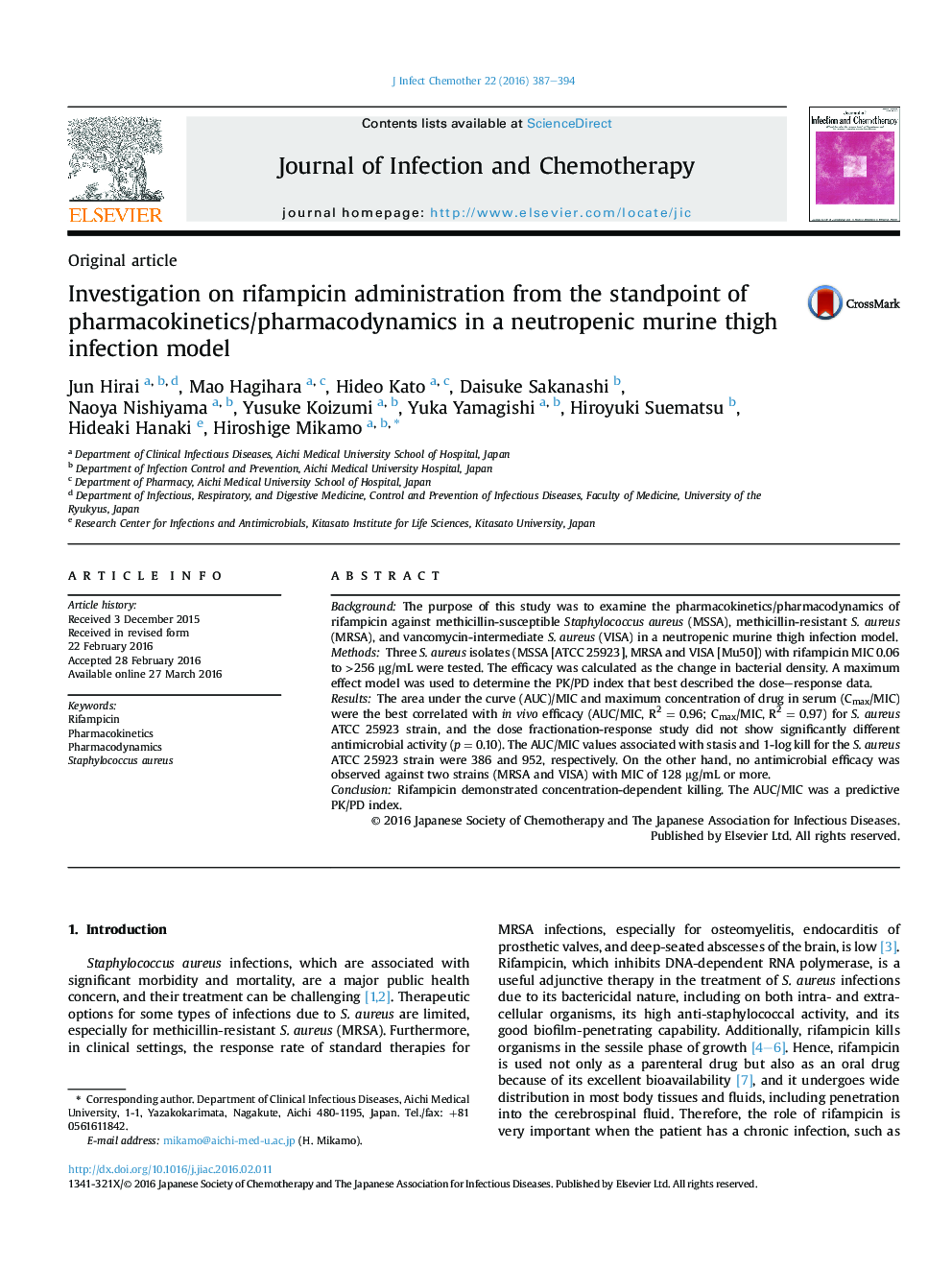| Article ID | Journal | Published Year | Pages | File Type |
|---|---|---|---|---|
| 3376626 | Journal of Infection and Chemotherapy | 2016 | 8 Pages |
BackgroundThe purpose of this study was to examine the pharmacokinetics/pharmacodynamics of rifampicin against methicillin-susceptible Staphylococcus aureus (MSSA), methicillin-resistant S. aureus (MRSA), and vancomycin-intermediate S. aureus (VISA) in a neutropenic murine thigh infection model.MethodsThree S. aureus isolates (MSSA [ATCC 25923], MRSA and VISA [Mu50]) with rifampicin MIC 0.06 to >256 μg/mL were tested. The efficacy was calculated as the change in bacterial density. A maximum effect model was used to determine the PK/PD index that best described the dose–response data.ResultsThe area under the curve (AUC)/MIC and maximum concentration of drug in serum (Cmax/MIC) were the best correlated with in vivo efficacy (AUC/MIC, R2 = 0.96; Cmax/MIC, R2 = 0.97) for S. aureus ATCC 25923 strain, and the dose fractionation-response study did not show significantly different antimicrobial activity (p = 0.10). The AUC/MIC values associated with stasis and 1-log kill for the S. aureus ATCC 25923 strain were 386 and 952, respectively. On the other hand, no antimicrobial efficacy was observed against two strains (MRSA and VISA) with MIC of 128 μg/mL or more.ConclusionRifampicin demonstrated concentration-dependent killing. The AUC/MIC was a predictive PK/PD index.
